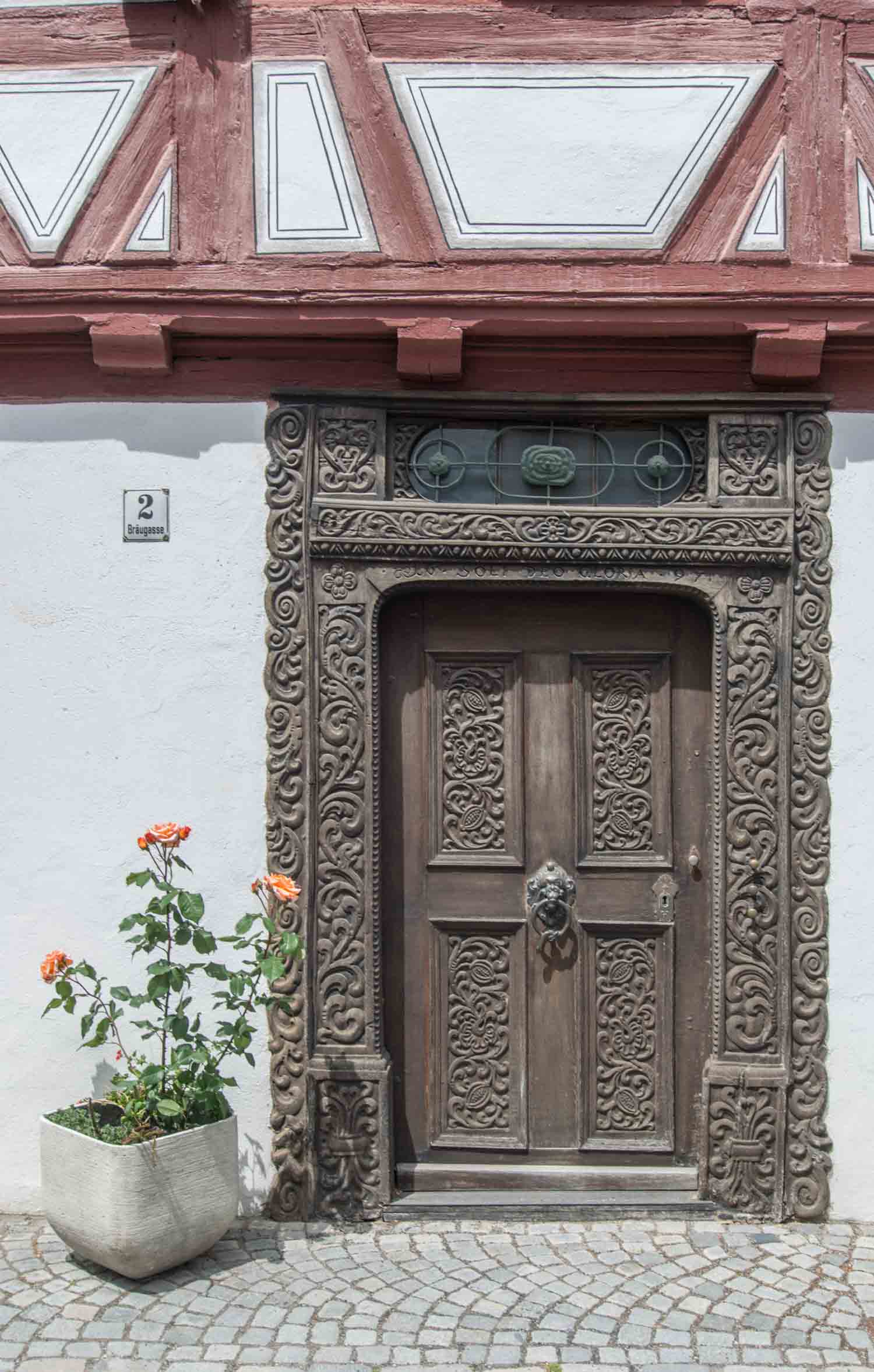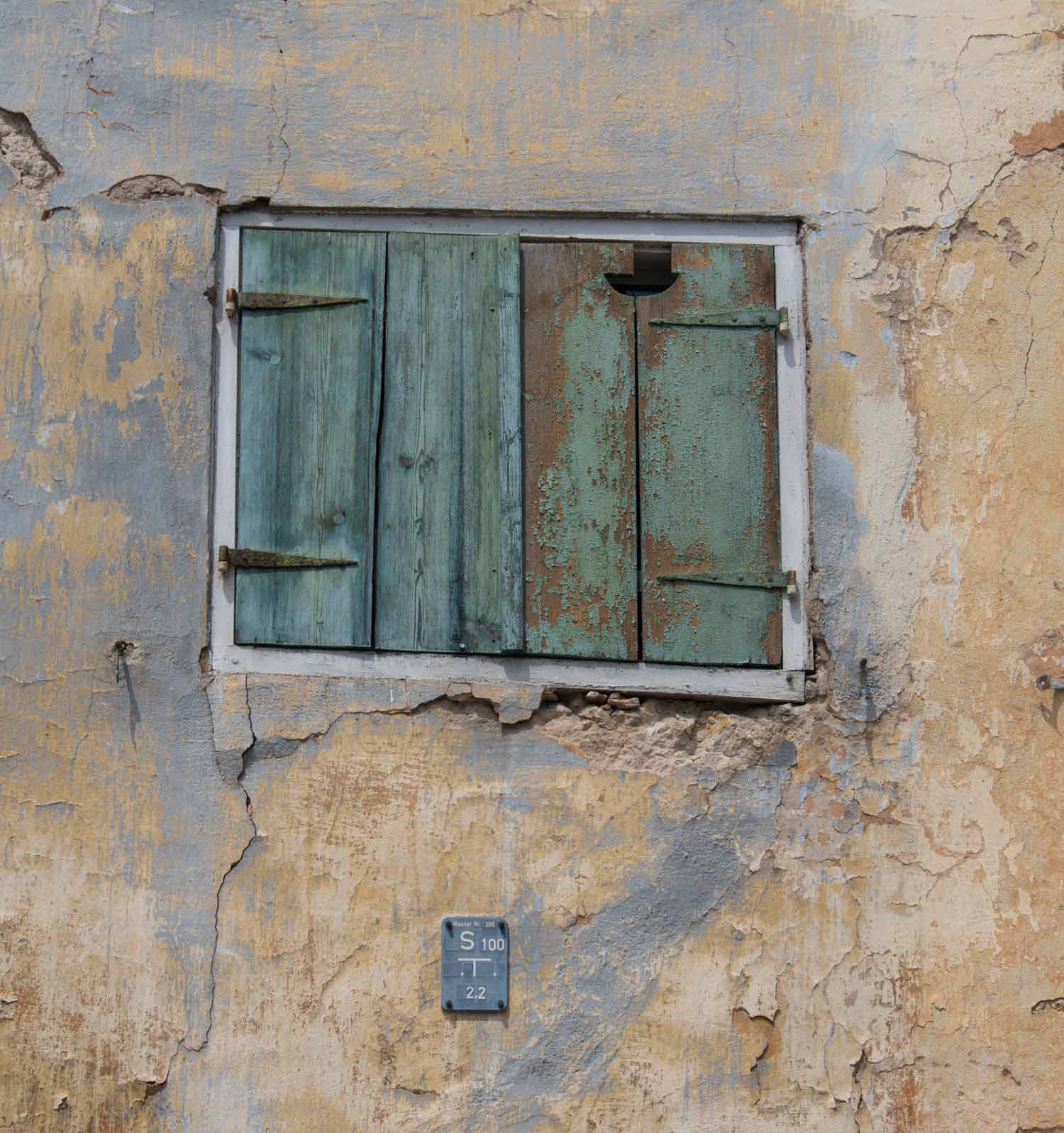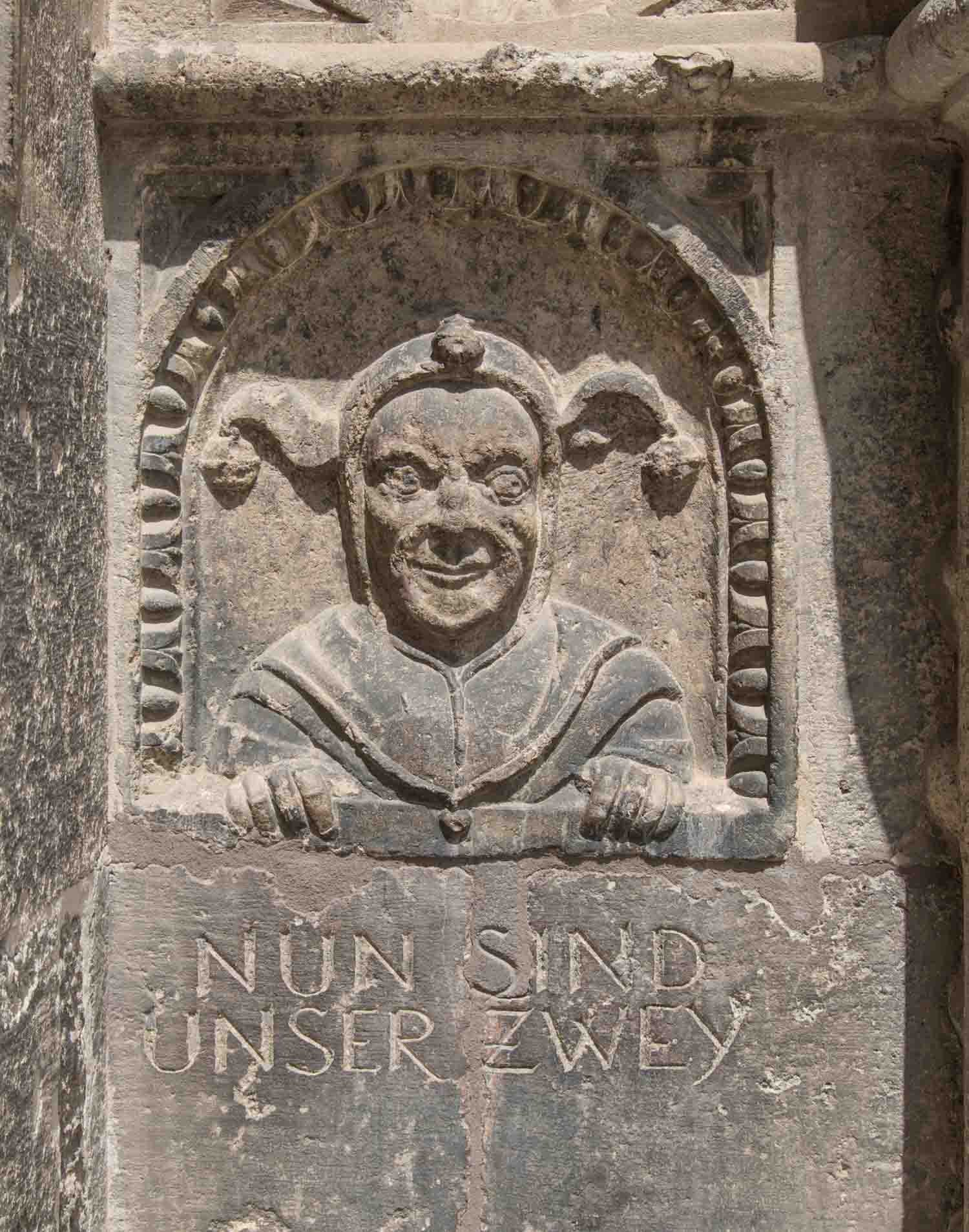Today we headed north onto the Romantic Road. This is a apparently a route contrived by travel agents in the 1950s to connect together some of the places in Southern Germany that are seen as somehow quintessentially German. So the idea over the next three days, before we have an appointment at the doctors with Basil in Dortmund, is to explore three small towns on this route which more than any other somehow represent a particular kind of Germanness.

The first is Nördlingen. One of its claims to fame, is that it is only one of three towns in Germany with a complete set of town walls. The others, surprises surprise are the two other towns we will visit in the next two days. Its history goes back to Roman times and beyond but it was granted city status in the 13thcentury and much of the current town, including the walls, were built between the 14thand 16thcenturies.
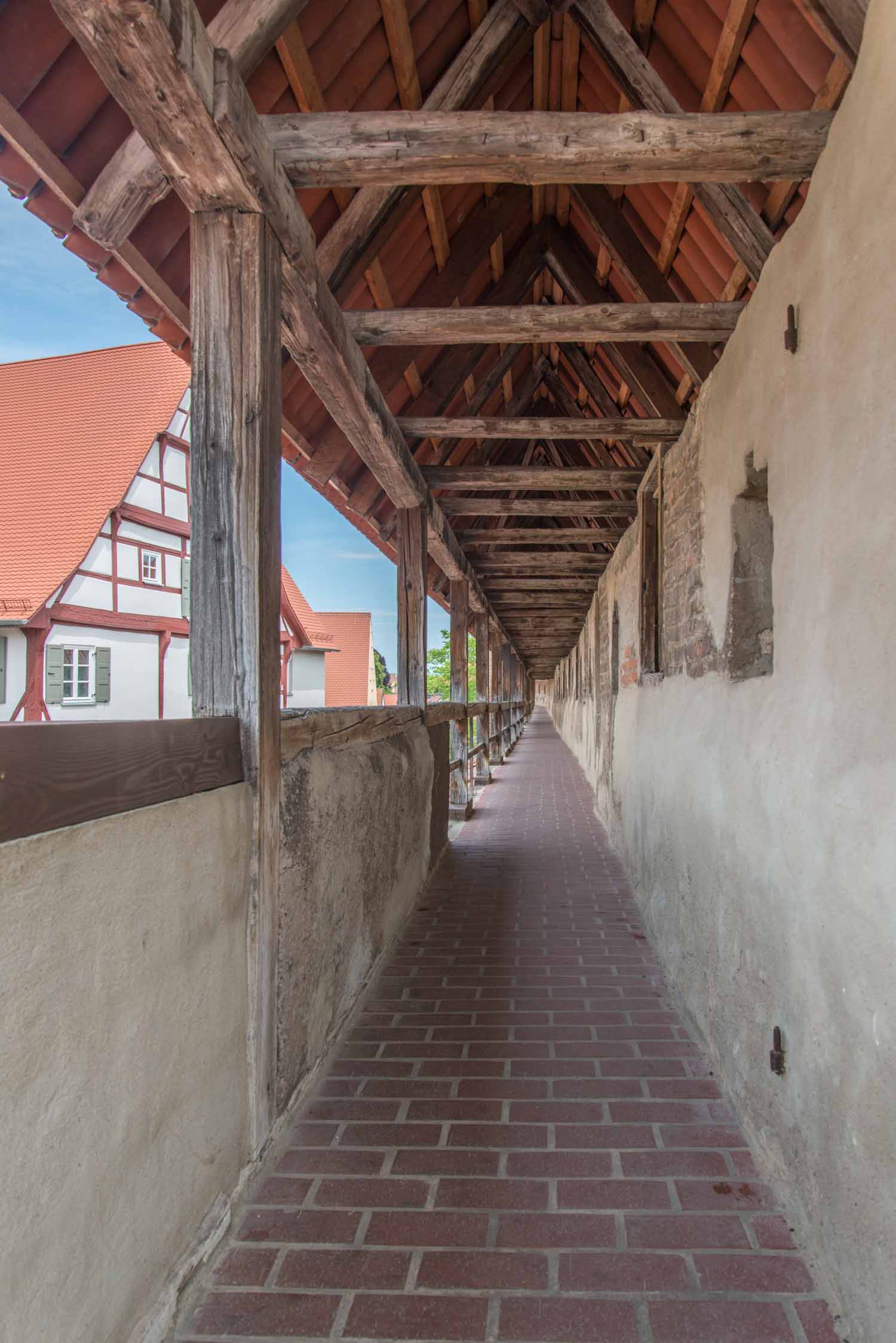
Nördlingen was only a one hour drive through fertile, mostly flat, agricultural land until we reached the town’s Stellplatz (48.855636, 10.485731 €3 per day). The Stellplatz is huge and probably can accommodate up to about 50 motorhomes and as we have noticed over the last two nights, providing there is room the Germans are much more laid back about “camping” style behaviour on their Stellplatz’s than would be the case in other parts of Europe: chairs and table out; BBQs; and we even seen a couple with their awnings out. Sarah made good use of this yesterday in Augsburg by getting a chair out and relaxing next to the lovely river which ran past the Stellplatz.

Because Nördlingen is quite small Sarah’s back was up to exploring the town and so we all set out through one of the gates in the town’s walls and found our way to the town square and tourist information office. As soon as we entered the town we were immediately pointing out to each other medieval buildings left, right and centre. If you got rid of the cars you could almost believe you had travelled back in time to the 16thcentury.
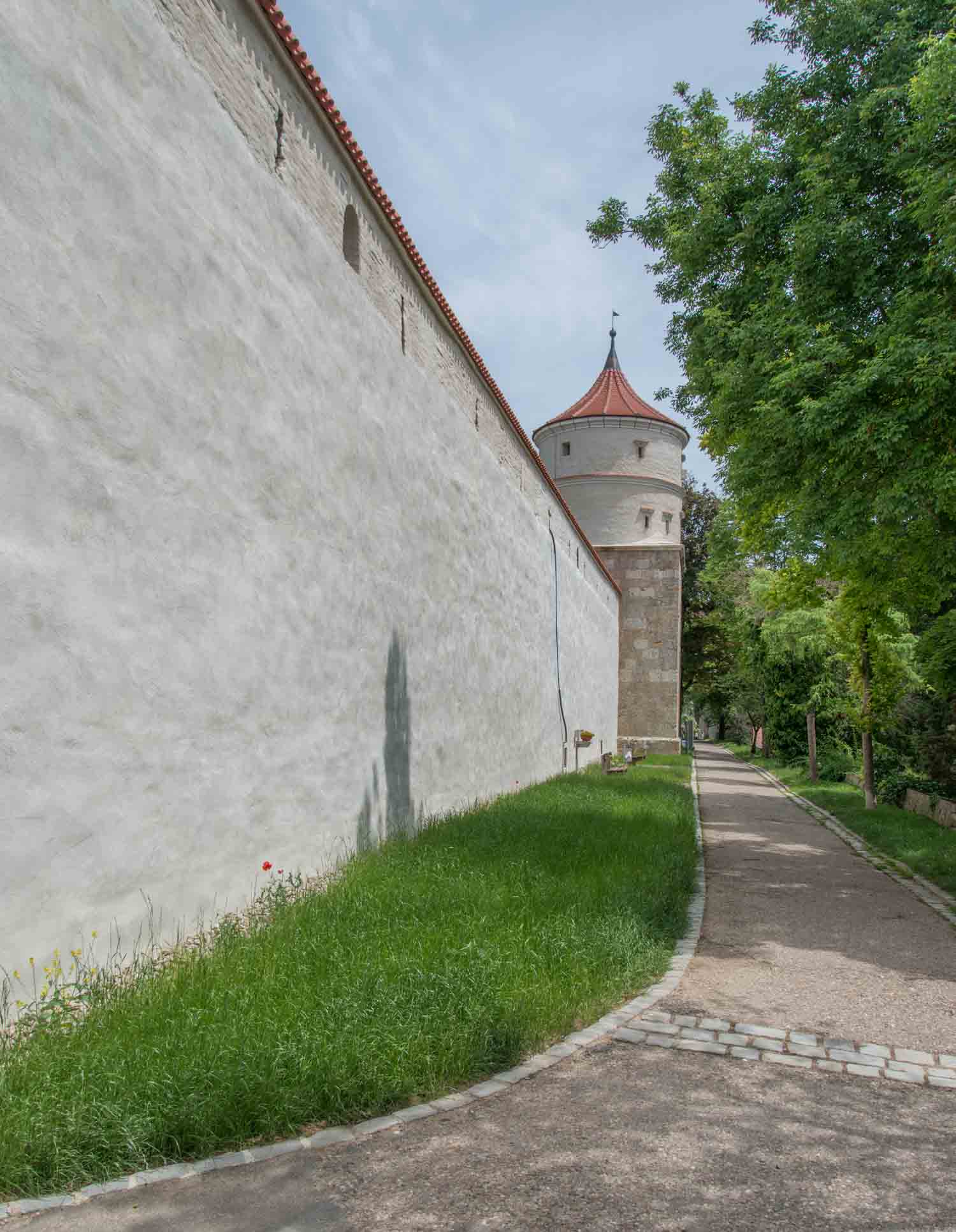
As we are coming to realise from or travels in Germany this year and in 2017, one of the great things about these beautiful preserved towns is what must be very strict planning regulations. Because, if a building is not genuinely 500 years old, it must at least be built in the same style. It is fairly easy to spot the real thing from more recent constructions, but the architectural style of the whole town is consistent.
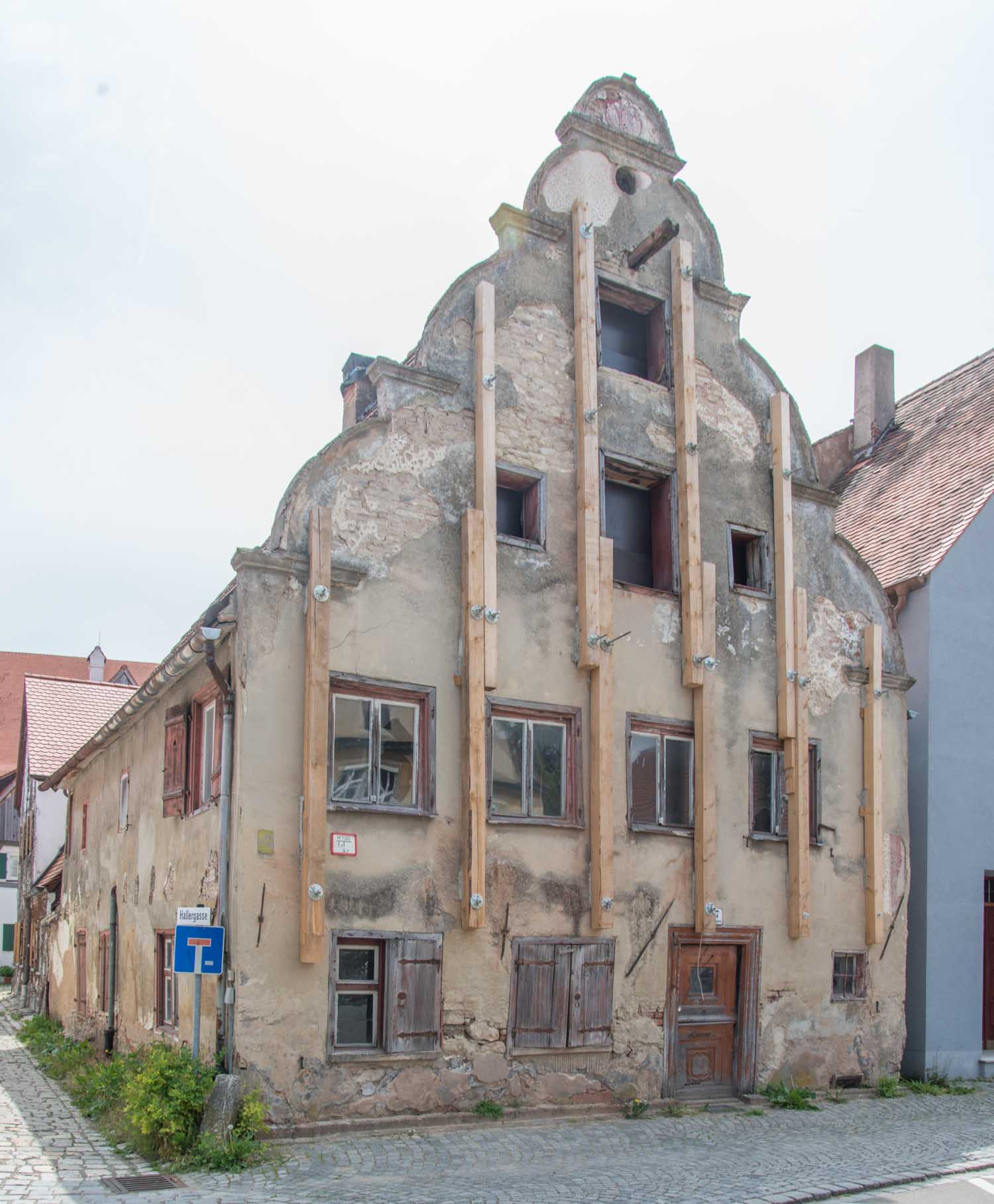
The tourist information office gave us a leaflet in English with a route past the most important buildings, which we found was extremely well marked by signposts along the route. In reality there are no particular “star” buildings except perhaps the 15thCentury St. George’s Church with its huge tower. Nördlingen’s attraction is more the whole atmosphere provided by the vast number of medieval buildings. The church is, I presume, Protestant, since Nördlingen came out on the side of the Protestants in the Reformation and the subsequent 30 years war. As a consequence it was captured by Catholic troops on two occasions, but unlike other towns, was spared destruction at the expense of huge reparation payments.

Nördlingen is built within Europe’s biggest impact crater formed about 14 million years ago when an enormous meteor hit the area at a speed of about 45,000 miles per hour releasing energy equivalent to about 1.8 million Hiroshima bombs. The resulting crater is about 24 kilometres across. A few of the buildings, including the church and parts of the town hall, are built from rock which resulted from the impact and it is supposed to contain large numbers of tiny diamonds formed in the impact. I had a good look and couldn’t see any, but perhaps souvenir hunters have taken all those easily seen!

Sarah’s back started playing up after we had completed most of the route and she and the dogs headed back while I completed the walk, which finished with a stroll around half of the 2.2 kilometre walls. Unlike the few town walls in England, these walls are roofed for the whole distance and although you are provided with good views into the town, the views outside are limited to a few slits in the wall.
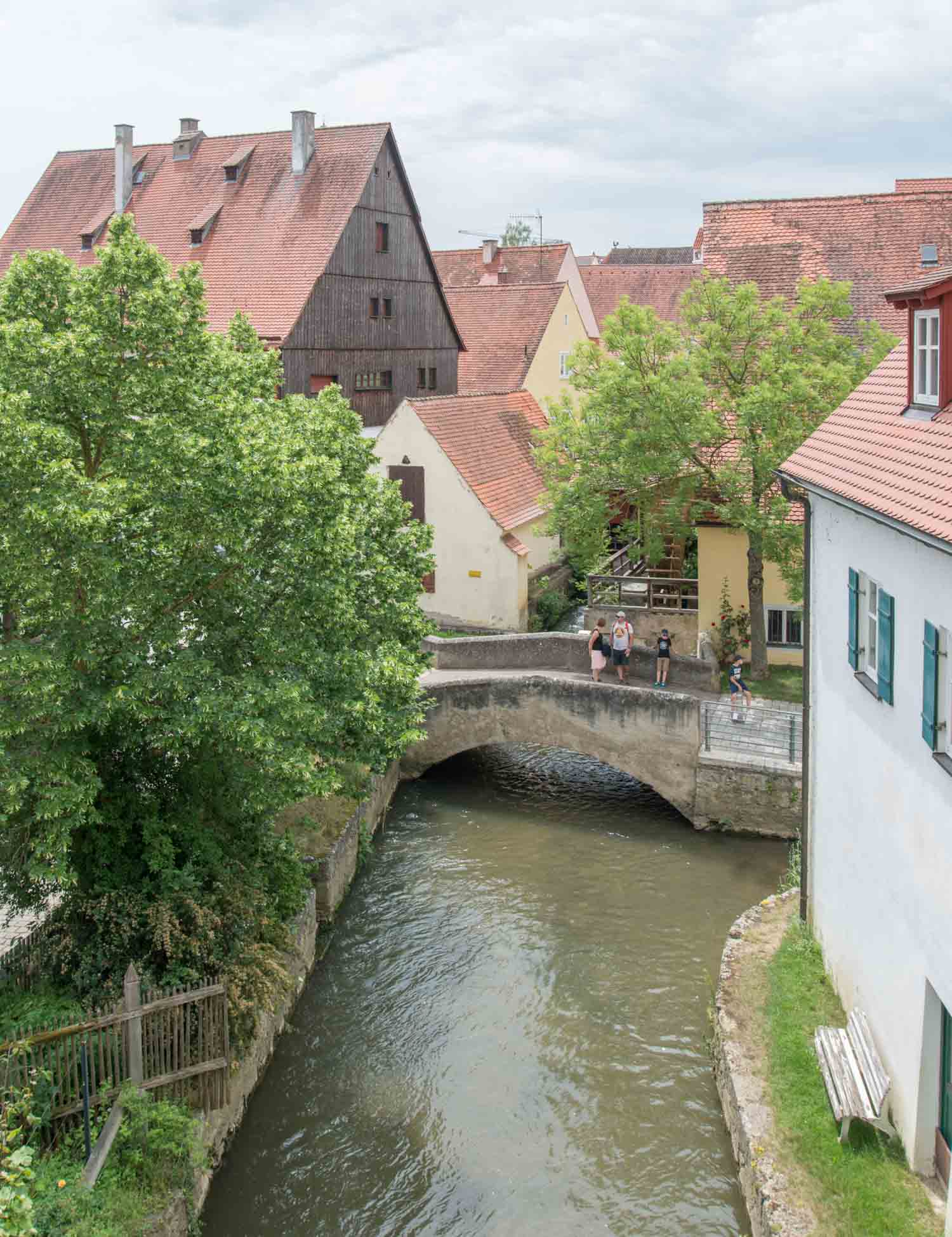
For anyone in this part of Germany Nördlingen is a must see, but from what I have read I suspect that I am going to be saying the same thing for the next two days!

